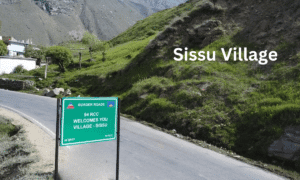Introduction
Let we discover Changpa Tribe in this blog: Nomadic graceful in Changthang- Ladakh 2024 Changthang is a high-altitude plateau in the eastern part of Ladakh, which is a region in the northernmost part of the Indian union territory of Jammu and Kashmir. This vast and remote plateau is known for its stark beauty, unique wildlife, and nomadic culture. Here are some key features of Changthang. The Changthang region, which is between 4,000 and 7,000 meters above sea level, is found in the eastern portion of the Union territory of Ladakh. One of India’s sparsely populated regions, it has a population of approximately 14,000 as of the 2011 Census, despite covering a sizable area of about 22,000 square kilometers.
Changpa Tribe: Nomadic Life in Changthang- Ladakh 2024
Changpa nomads, a small tribe living harmoniously with their herds of sheep, goats, and yaks. The vast region of Changthang, including Kharnak, is a high-altitude desert where the arid soil makes it challenging for vegetation to thrive. Yet, upon closer inspection, seemingly barren landscapes reveal the resilience of life. Tiny plants and blades of grass, nearly invisible to the eye, sustain the diverse wildlife, including Kiangs, Blue Sheep, and the herds raised by the Changpa nomads

Changthang, the Changpa Tribe’s Ladakh home
Geographically, the Changthang Plateau extends all the way to Tibet and is a patchwork of steppe grasslands and wetlands sandwiched between the Karakoram and Himalayan mountain ranges. The Changthang region is home to a number of high-altitude lakes, the most well-known of which are Tso Moriri, Tso Kar, and Pangong Tso, in addition to its marshy sections. The area also has sand deserts, and the Hanle and Indus rivers cut through the plateau. It makes sense that Changthang is home to a rare variety of flora and fauna. In last article we seen Sissu Village in details, Let we see Changpa Tribe through my eyes.

Who are the Changpa Tribe?
The Changpas, also known as the Changpa tribe of Ladakh, are a semi-nomadic group of people who inhabit the beautiful and desert Changthang plateau, which is located in parts of Tibet and eastern Ladakh. Living at an elevation of nearly sixteen thousand feet above sea level, they have been here for centuries, shepherding the famous Pashmina rearing goats, also called Changthangi or Changra.

The Changpa tribe, who survive in bitter cold with the barest essentials, is a testament to the human race’s determination. The Changpas are shepherds who come every year to look for greener pastures for their horses, sheep, and yaks. Buddhists: you will frequently see them holding a prayer wheel or a beaded necklace. The Changpas lead an incredibly fascinating nomadic life, producing some of the best wools while surviving on some of the hardest terrains.
Ladakh is the ethnic home of the Changpas. Nevertheless, following China’s occupation of Tibet, a different group of people from the Tibet Autonomous Region moved to India. Therefore, in some areas of Ladakh, you will also find Tibetan refugees who have fled their home country.
- High Altitude: The average elevation of Changthang is 4,500 meters (14,764 feet) above sea level. The distinctive climate and landscapes of the area are influenced by the high altitude.
- Isolated and Remote: Changthang is a sparsely populated, isolated area distinguished by shimmering lakes and wide stretches of high-altitude desert. The area’s pristine and unspoiled nature is enhanced by its isolation.
- Lakes: The plateau is dotted with a number of stunning lakes, such as the well-known Tso Moriri Lake and Pangong Lake. These high-altitude lakes are well-known for their captivating blue waters and breathtaking mountain reflections.
- Wildlife: A variety of migratory bird species, marmots, and the Tibetan wild ass (kiang) can be found in Changthang. Not only is the area home to the endangered snow leopard, but it’s also a haven for lovers of the natural world and environmental preservation.
- Nomadic Culture: The area is home to nomadic herders, most of whom are from the Changpa community. These nomads are renowned for leading a traditional lifestyle and for herding yaks and Pashmina goats. Their distinct culture enhances Changsheng’s attraction.
Summer Time in Changthang
In Changthang, summer is a time of plenty. Because of the snowfall from last year, there is an abundance of grass. The animals consumed themselves on this abundant grass, which has left them plump and healthy. As usual, the Changpas keep themselves occupied by taking care of their animals. In Changthang, the summer and fall seasons offer plenty to do, but life is not as hectic as it is in the winter. In the spring and summer, the Changpas of Rupshu dispersed throughout the plains of KiangChuThang. Kiang Chu Thang, also called More Plains, is a large plain that is over 70 kilometers long and, for the most part, 5 to 6 kilometers wide broad in most areas.
Chu means water, Thang means plains, and Kiang is the name of the wild ass of Tibet. Thus, KiangChuThang alludes to an area where even Kiangs are unable to locate water. As its name suggests, there isn’t much water at KiangChuThang. For a drink of water, the Changpas bring their animals to the Samkhel Lungpa stream every few days. The Changpas’ daily routine back at the camp is comparable to what we observed during the winter. Every morning, the dimos are milked, released during the day, rounded up in the evening, and then returned to the camp for the night. Every day, the sheep and goats, known as Ra and Lug, are taken out to graze as usual.
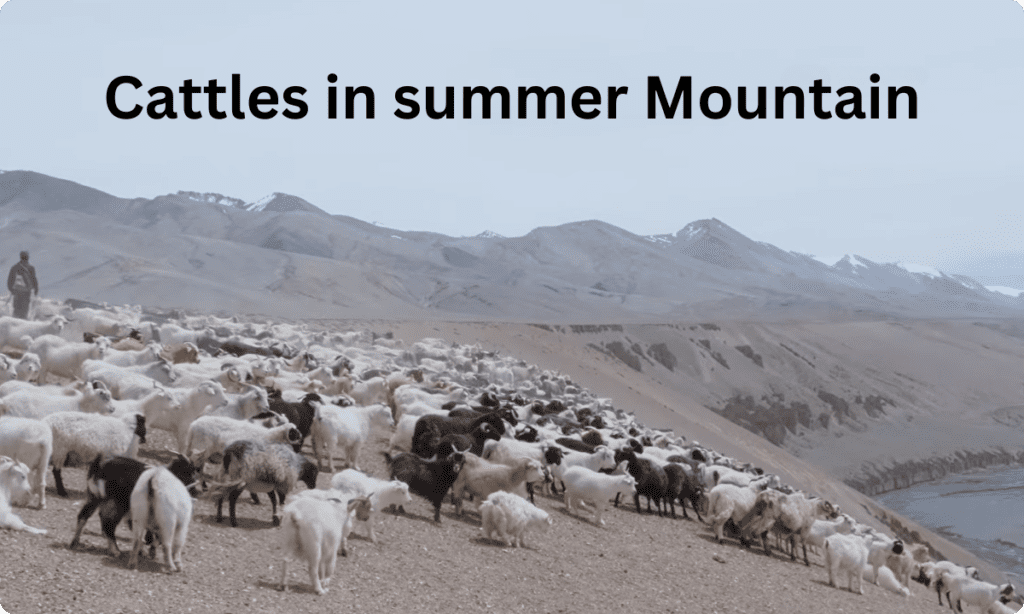
The goats are milked in the summer, which is the only distinction with the winter. This is due to the fact that their children have grown up and are no longer as reliant on their mother’s milk as they were in the winter. The summer and fall months have warm, generally pleasant weather. The Changpas perform a lot of their household chores outside to take advantage of the nice weather. Chang is a rice, millet, or barley-based mildly alcoholic beverage. Chang is made by boiling barley in water and then fermenting it. In Ladakh, chaging is a common way of life. In addition to being a recreational beverage, it’s also used for weddings, religious ceremonies, and, of course, entertaining guests.

Tsampa is made with barley, which is another significant use. Due to their nomadic lifestyle, the Changpas do not cultivate barley. Rather, they purchase it from low-lying communities in the Ladakh valleys. After cleaning, this barley is roasted over a wood fire. You can see these scenes being performed in villages all over Ladakh during the fall, when Tsampa (also known as Tsamba) is prepared. Tsampa is a staple meal that is popular in parts of northern Nepal and Tibet.
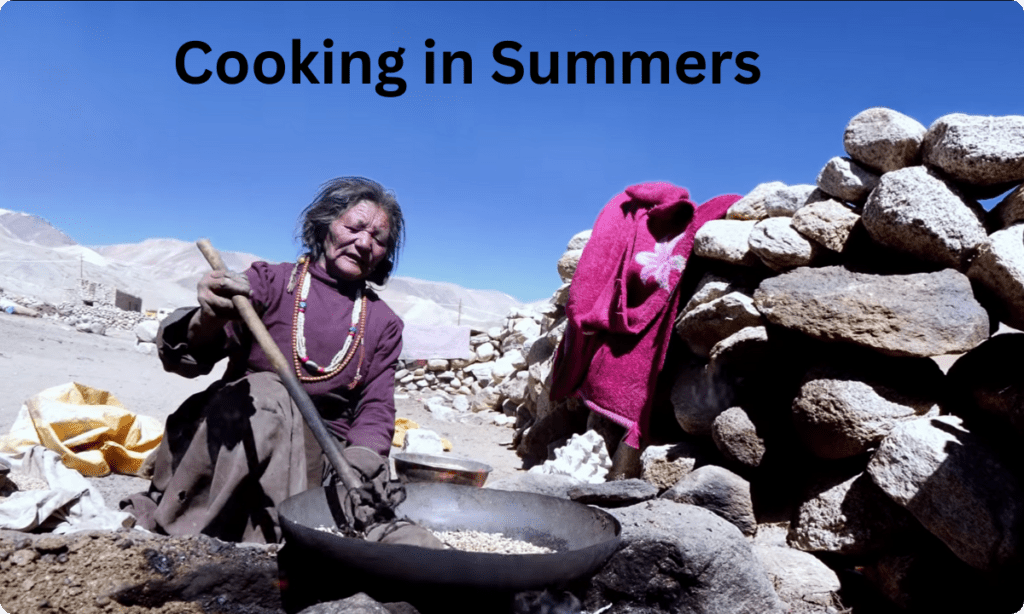
Next, the roasted barley is ground to make Tsampa. Traditionally, the Changpas grind by hand which is a laborious and slow procedure. The locals say that using water mills to grind the barley yields the best Tsampa. Although it is becoming less common, you can still see this practice in some of the isolated Ladakh villages. The summer is when you should gather and store fuel. suitable for use in the winter as well as the summer. The Changpas’ primary fuel source is the dung from the goats and cattle, which is gathered on a regular basis throughout the year.
The women of Changthang take advantage of the pleasant summer and autumn weather, by weaving their carpets outdoors. They use a basic blackstrap loom for this purpose. Unlike traditional looms which are big and cumbersome to move around, the blackstrap looms are very portable and perfectly fit in with the Changpas nomadic way of life. The women consider the process of weaving the carpet similar to the birth of a child. The warp of strings making the backbone of the carpet is like the mother’s womb.
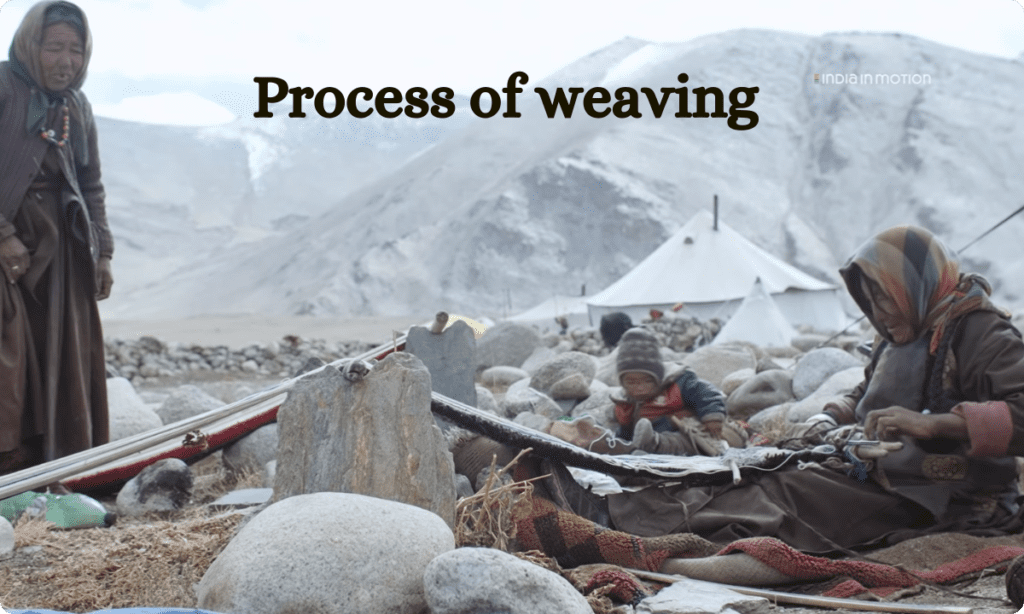
Source of Income
The Changpa Tribe have been shepherding Pashmina wool for centuries, and this is their primary source of income. For generations, they have been producing top-notch Pashmina wool. The idea that Pashmina is a part of Kashmir is untrue. The Changpa Tribe are in charge of herding the sheep through inclement weather in order to produce the pricey Pashmina wool,
which is sold to Kashmiri craftspeople who use it to create the luscious Pashmina shawls. In addition, the Changpas make money through the sale of customary hand-woven carpets. Not only that, but they also sell the lower valley villagers dried sheep and goat dung, which they first sun-dry. It functions as a regular important to the locals, particularly during Ladakh’s winter.
There are some specific words used in Ladakh listed below
- Changthang: Changpa homeland, situated west of Tibet and east of Ladakh
- Julley: Greeting of the Ladakhi, on both meeting and parting, also means thank you.
- Gur-gur: Onomatopoiec word – the sound made by cylinder wooden churn in which butter and ingredients of tea are made – hence gur-gur chai – butter tea
- Pabu: traditional shoes fashioned from readily available leather
- Tsampa– Parched barley flour, the staple food of the Tibetan peoples also called as Ngamphe in Ladakhi.
- Cho-cho and no-no: Infants are not given a name till they are 1-2 years old, prior to that baby girls are known simply as cho-cho and baby boys a no-no.
- Rebo – Rebo is a tent made of yak hair constructed over an excavated site roughly two and half feet deep and 20ft wide on either side.
- Dimo – Female yak
Home and Traditions of Changpa Tribe
No matter the tribe, there is a complex web of customs, laws, and traditions living inside the threshold of every family Rebo home. The stove is in the middle of the Rebo, which is divided into two sections based on gender. On the left is the women’s domain, where cooking is done and food and utensils are kept. The male side is to the right, where men sit and store their saddles and riding equipment.
While females hardly ever ventured into the right half of the tent, males could move between the left and right sides. all in all A Changpa family’s core is the Rebo, where heat is provided by the stove to keep the home cozy. They lounge or lie on a rug made of sheep or yak wool around it, eating, sleeping, and mingling. Note :Rebo is a tent made of yak hair constructed over an excavated site roughly two and half feet deep and 20ft wide on either side.
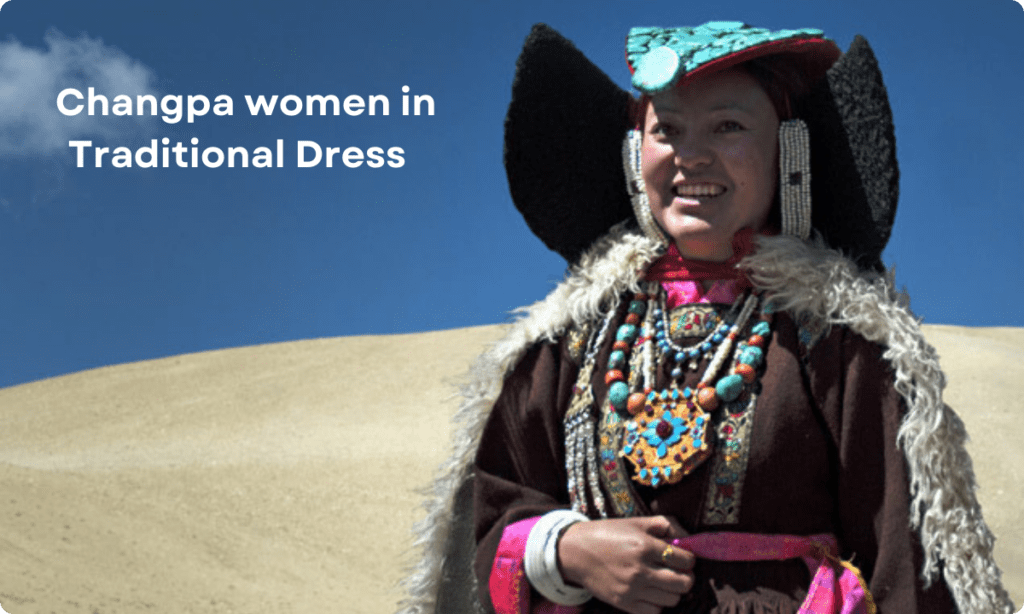
The majority of a family’s transportable wealth is held by the women in the form of jewelry; their most priceless item is the Ped-rag, an enormously bulky headpiece that extends from the forehead to the middle of the back. Large turquoise stones are inlaid from front to back, with coral lining the edges and silver charms. It is handed down to the oldest daughter by her mother when she gets married. While Ladakh weddings are lavish events, nomad weddings are unending celebrations with a great deal of food and drink.
Some marriages are arranged and planned with months of preparation as early as two or three years ahead of time. Some are rapidly planned, and the news of the union is kept under wraps for as long as possible to avoid the abduction of the bride, or Nama Kotches. The bride-kidnapping marriage is peculiar to the culture of the region because it is neither common nor uncommon. and the girl in question is free to choose and is under no obligation to comply.
How to Reach Changthang
By Air: The closest airport to Changthang’ s mountains is Leh Airport. Upon reaching the airport, guests have the option of traveling by car to the plateau.
By Road: Travelers who are avoiding Ladakh can go from Manali or Srinagar to Changthang. Whichever route they choose, they will get to experience breathtaking views of the snow-capped peaks and surrounding landscapes while traveling. After reaching Leh, Leh to Pangong Lake: A popular route takes you from Leh to Pangong Tso (Pangong Lake), which is a part of the Changthang plateau. The journey offers breathtaking views of the Himalayas and takes approximately 5-6 hours.
By Train: Changsheng’s closest train station is Udhampur Railway Station. To get to this stunning plateau, guests can hire taxis or cabs at the railway station.
Changthang’s Tourist Attractions:
Pangong Tso Lake: One of those locations that you can picture as being extremely beautiful, but you don’t fully appreciate its beauty until you actually go there is Pangong Tso Lake. This lake is particularly well-known among the other well-known lakes in Ladakh because of its amazing beauty as well as its significance as a fragile border point along the Line of Actual Control. It became extremely well-known after appearing in the Bollywood film “3 Idiots.”
Tso Moriri Lake: This breathtaking lake is near Changthang and is situated at an elevation of 4,000–5,000 meters. This picturesque lake can be visited from Changthang or vice versa by tourists who are organizing a trip to Leh Ladakh.
Changtang Wildlife Sanctuary: Changtang Wildlife Sanctuary is a treasure for those who enjoy the outdoors, wildlife, and photography. It is home to some of the most rare and endangered wildlife species. Among India’s top wildlife sanctuaries, it boasts an impressive population of black-necked cranes and Tibetan wild ass. The Changtang Wildlife Sanctuary is home to a variety of other animals, including blue sheep, antelope, lynx, snow leopards, Tibetan wolves, Tibetan argali, wild yaks, and Tibetan gazelles. In addition, it provides a wide variety of flora and over forty distinct bird species species with an excellent place to live.
Best Time to Visit Changthang
Changtang’s climate can be quite harsh and almost unpredictable, so if you plan a trip to Leh Ladakh that includes a visit to this plateau without planning ahead, things could go very wrong! All things considered, though, the summer months of May to September are the best for visiting this highland plateau. Nearly the whole plateau inside India’s borders exhibits its most stunning features at this time of year and provides an abundance of exciting tourist activities.
Permits:
Inner Line Permit: You can get an Inner Line Permit in Leh, which is necessary in order to travel to Changthang. To enter restricted areas along the Indo-China border, you must have this permit.
Travel Advice
Acclimatization: It’s important to adjust to the high altitude in Leh before continuing due to its high altitude.
Weather Safety Measures: Carry warm clothing even in the summer, and be ready for sudden changes in the weather.
Transportation Arrangements: Make sure your vehicle is dependable, particularly if you intend to travel to isolated locations with potentially difficult road conditions.
Conclusion: Changpas future is in risk due to the quick effects of modernization and the growing number of young people abandoning herding in favor of their ancient customs and way of life. It wouldn’t be incorrect to say that the Changpas of Ladakh are a nomadic people whose way of life is quickly disappearing, much like the skill of making fine Pashmina.
Share the blog “Changpa Tribe: Nomadic Life in Changthang, Ladakh 2024“.on social platforms and help others who wants to visit a offbeat locations.



